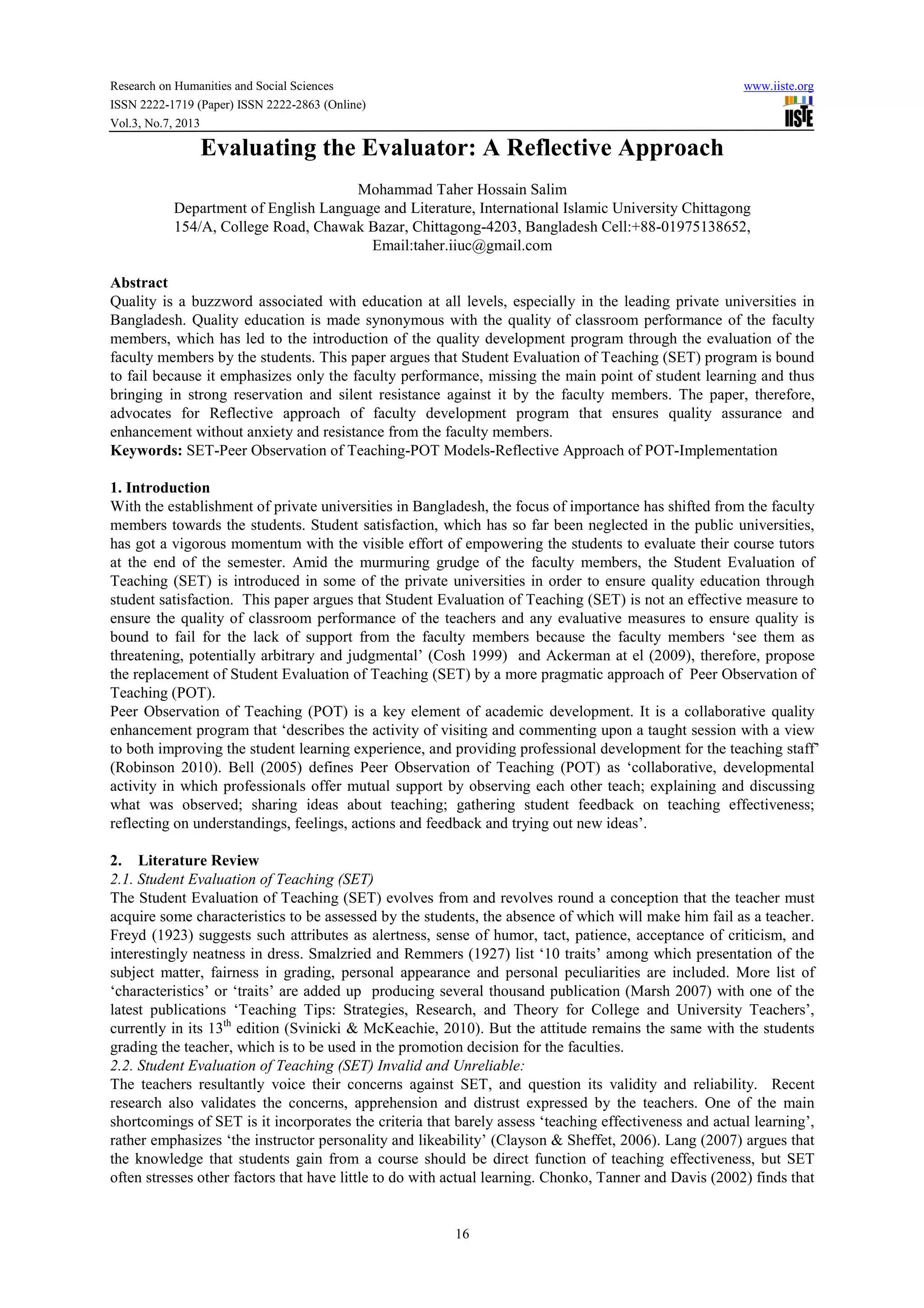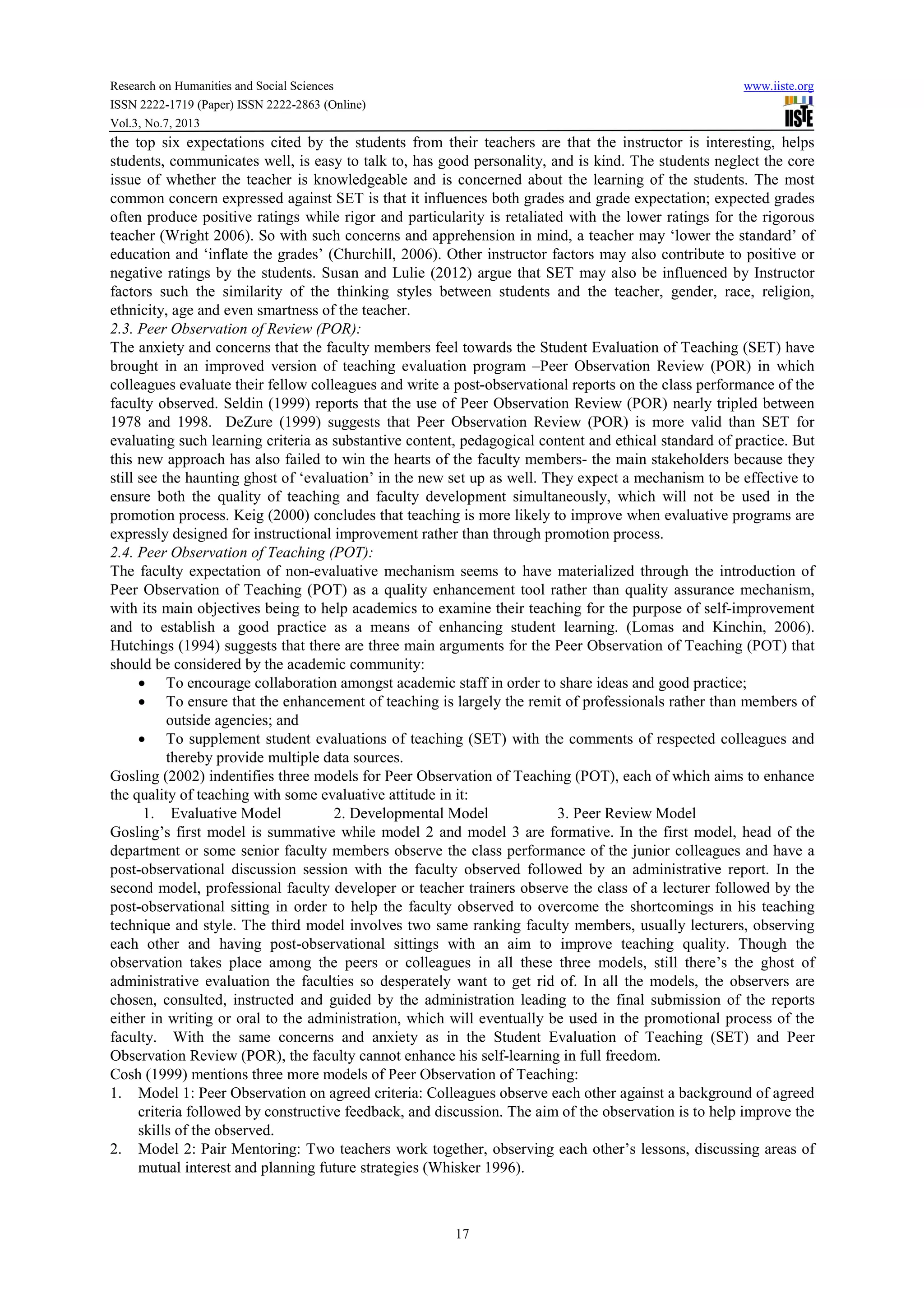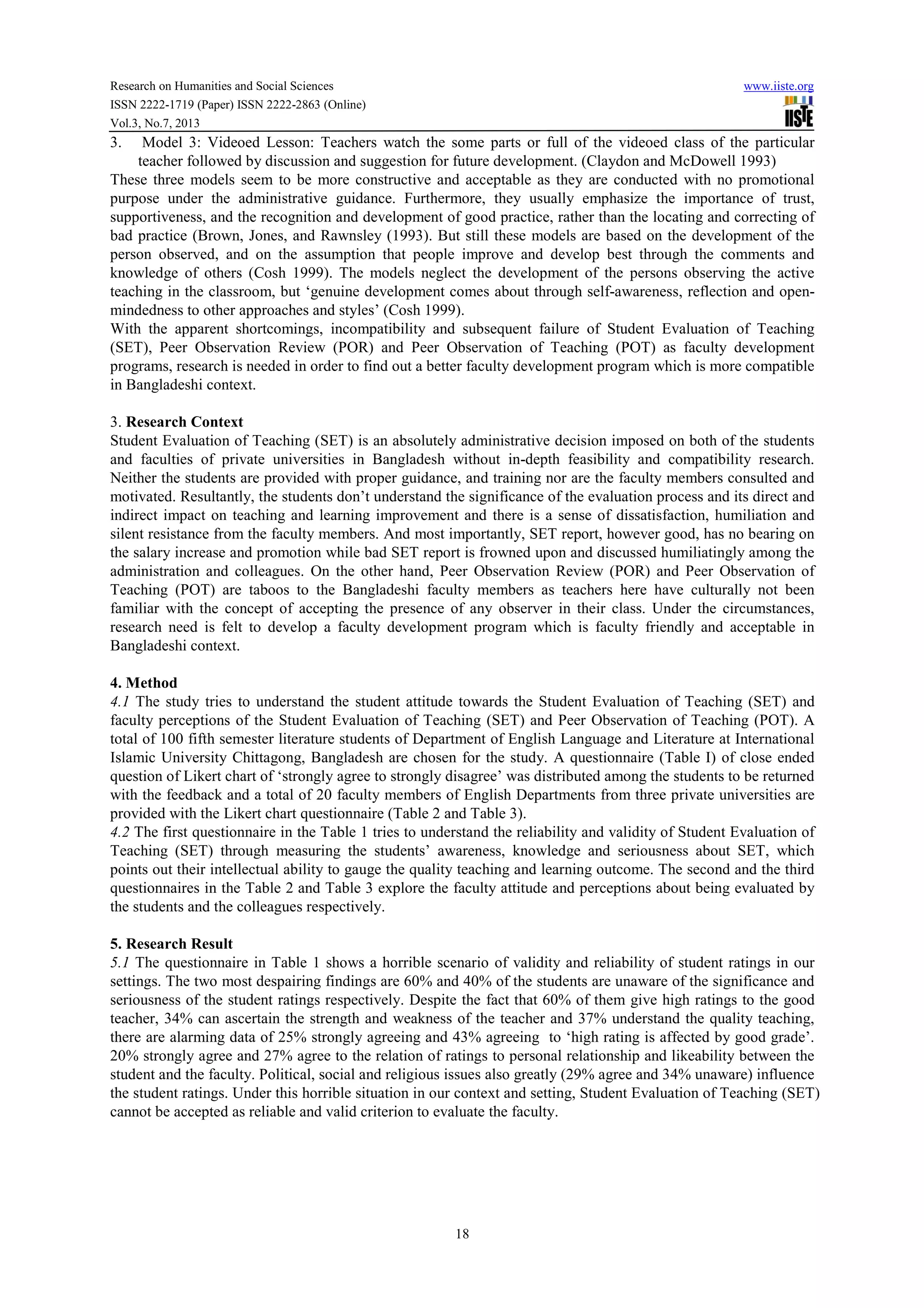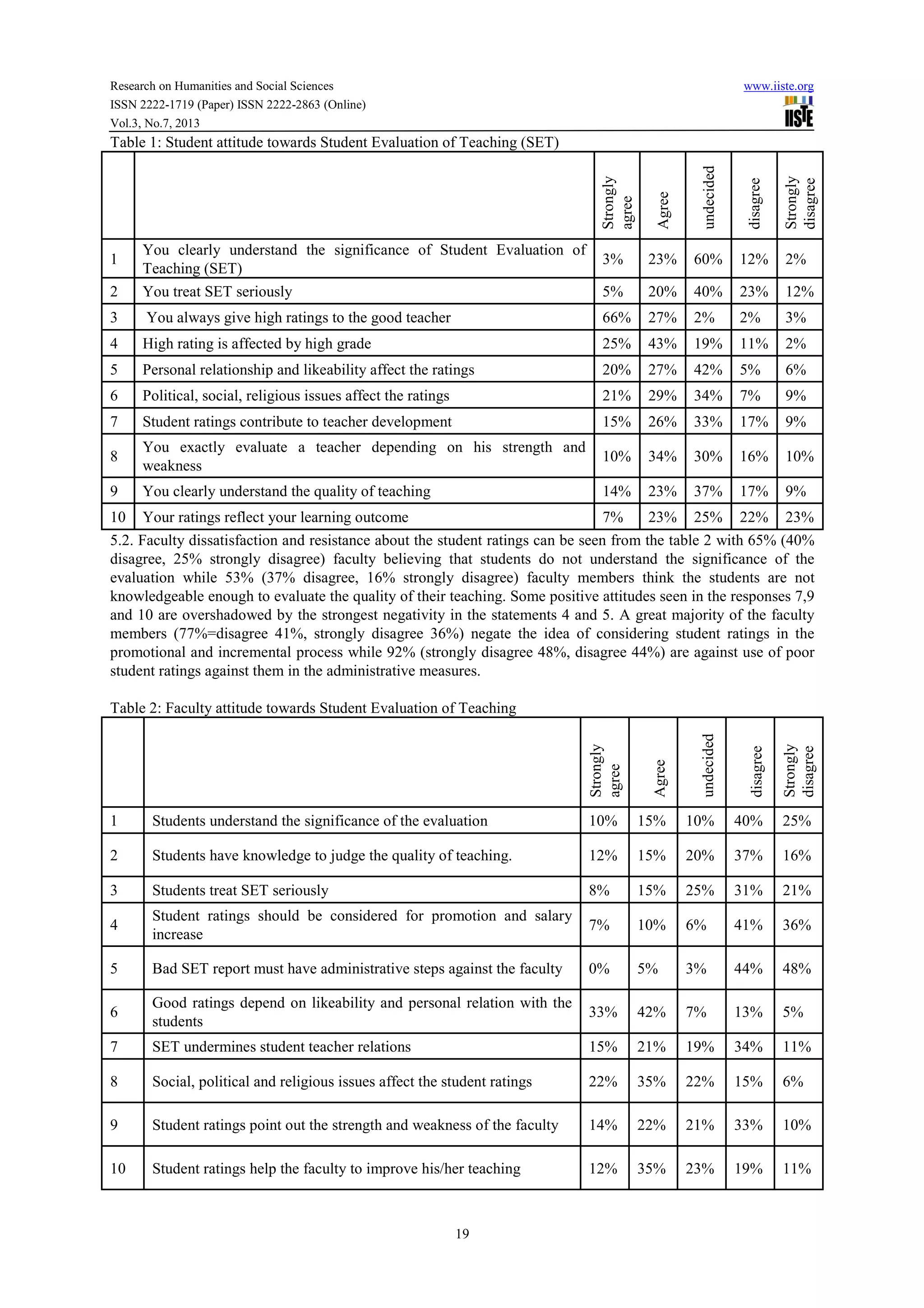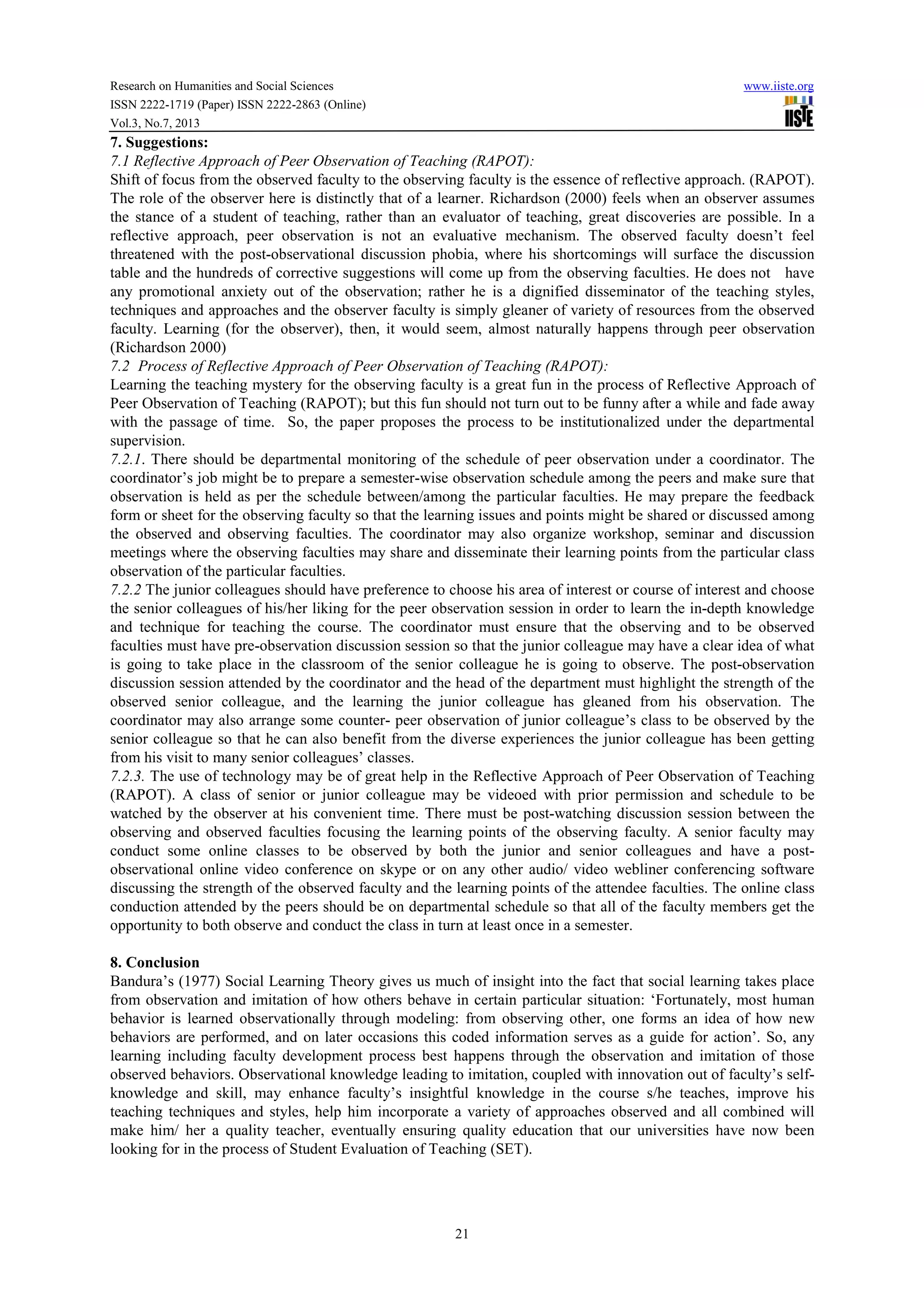This document summarizes research on different approaches to evaluating teaching quality, including Student Evaluation of Teaching (SET), Peer Observation of Teaching (POT), and Peer Observation of Review (POR). It argues that SET is unreliable and focuses more on instructor personality than actual learning. POT and POR were introduced as alternatives, but faculty still saw them as evaluative and threatening. The document advocates for a reflective approach to POT that ensures quality enhancement without anxiety or resistance from faculty. It discusses different POT models and argues they still involve administrative evaluation, when faculty want evaluation removed from promotion decisions to freely enhance self-learning.
